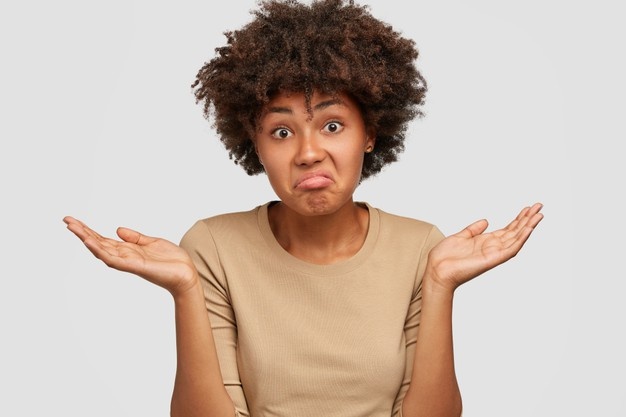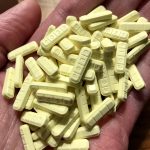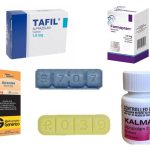List of Xanax Alternatives

Anxiety disorders and panic disorder is growing concern globally. Generalized Anxiety Disorder, GAD, is an anxiety disorder characterized by chronic anxiety, exaggerated worry, and tension, even when there is little or nothing to provoke it.
Anxiety disorders differ from normal feelings of nervousness or anxiousness and involve excessive fear or anxiety. Anxiety disorders are the most common of mental disorders and affect nearly 30% of adults at some point in their lives.
Panic disorder is diagnosed in people who experience spontaneous seemingly out-of-the-blue panic attacks and are very preoccupied with the fear of a recurring attack. Panic attacks occur unexpectedly, sometimes even when waking up from sleep. Panic disorder usually begins in adulthood (after age 20), but children can also have panic disorder and many children experience panic-like symptoms (“fearful spells”).
About 2-3% of Americans experience panic disorder in a given year and it is twice as common in women than in men. Panic disorder can interfere a lot with daily life, causing people to miss work, go to many doctor visits, and avoid situations where they fear they might experience a panic attack. The interference is greatest when people also have agoraphobia, as well as panic disorder.
What is Xanax?
Xanax is a brand of alprazolam used to treat anxiety disorders and panic disorders. Alprazolam is in a class of medications called benzodiazepines. It works by decreasing abnormal excitement in the brain. Doctors often prescribe Xanax for generalized anxiety disorder and panic disorder. It is one of the most common medications for these conditions, and it belongs to a class of drugs called benzodiazepines, or benzos.
Peak levels in the blood occur 1–2 hours after taking a dose. However, the person will feel the effects before levels peak. One study, which examined the effects of Xanax in 14 healthy people, found that participants felt the effects of the medication in under 1 hour, with an average onset time of 49 minutes.
Xanax Alternatives
For some people, the side effects of Xanax can be intolerable hence the search for alternatives that manage the condition while producing little or no side effects.
This article includes a list of prescription, over the counter medication, and natural products that you can use as alternatives in the management of anxiety they include:
- Diphenhydramine (Benadryl, Advil PM): This antihistamine can have mild anti-anxiety effects. It also promotes drowsiness and, therefore, can be used as a short-term sleep aid as well. It normally takes about 30 minutes to work.
- Buspirone (Buspar): Buspirone is a medication primarily used to treat anxiety disorders, particularly generalized anxiety disorder. Benefits support its short-term use. It is taken by mouth, and it may take up to four weeks to have an effect.
Natural alternative to Xanax
- Valerian root: Valerian (Valeriana officinalis) is an herb native to Europe and parts of Asia. Valerian root has a long history of use as a sedative. Valerian root is a common ingredient sold in dietary supplements. Valerian have been used for centuries for anxiety and as a sleep aid. It is also used to ease menstrual and stomach cramps. Researchers aren’t sure how valerian root works to ease insomnia and anxiety. They think it subtly increases the levels of a chemical known as gamma aminobutyric acid (GABA) in the brain. GABA contributes to a calming effect in the body.
- Holy basil (Ocimum sanctum): Holy basil is a plant that is native to India. It is commonly used in the traditional Indian medicine system, Ayurveda. It works by decreasing the levels of the stress hormone cortisol in the brain, and this reduces anxiety.
- Arctic root (Rhodiola Rosea): Arctic root is a plant that grows in cold parts of Europe and Asia. The root has a long history of use in traditional medicine. Rhodiola has been used in traditional medicine in Russia and Scandinavian countries for centuries. Studies have found rhodiola may help strengthen the body’s response to physical stressors like exercise and psychological stressors such as fatigue and depression.
- Thiamine (B1): This is a naturally occurring mineral in the brain. When taken as a supplement, it can help with emotional processing.
- N-A-C (N-acetyl L-cysteine): This amino acid antioxidant is a precursor to glutathione, which can lower oxidative stress and detoxify the liver to minimize anxiety symptoms. Studies indicate that NAC reverse anxiety-like behavior and oxidative damage observed in stressed animals.
- Ashwagandha: Ashwagandha is one of the most important herbs in Ayurveda, a form of alternative medicine based on Indian principles of natural healing. Ashwagandha may have a calming effect on anxiety symptoms when compared with the drug lorazepam, a sedative and anxiety medication. A 2000 study suggested that the herb had a comparable anxiety-reducing effect with lorazepam, suggesting that ashwagandha might be as effective for reducing anxiety.
- Kava (Piper methysticum): Kava is known to produce pleasant sensations and have a calming, relaxing effect on people that use it. Because of its calming qualities, kava has come to the attention of the medical community as a possible treatment for generalized anxiety disorder (GAD).
- Taurine: An amino acid precursor to GABA, taurine can help to increase levels of GABA in the brain. This may help to improve insomnia, decrease brain overactivity, and have relaxing effects.
- Gotu kola (Centella Asiatica): This helps to promote calm and contentedness. It is often used in meditation as it is believed to help balance the brain.
- CBD oil (cannabidiol): CBD oil, extracted from the cannabis plant, contains less than 3 percent THC (tetrahydrocannabinol), the psychoactive chemical in marijuana CBD has been shown to decrease anxiety or have no effect on anxiety even at high doses, while THC decreases anxiety at lower doses and increases it at higher doses. Theoretically, it’s possible that CBD could make you anxious if there’s a high level of THC in it.
If your doctor has prescribed Xanax for your anxiety or panic disorder, do not switch to any of the above-listed products without first discussing it with him/ her. There is only one recommended method for coming off Xanax and that is to taper the dose under medical supervision. Since medical detox is the only safe method, any other form of withdrawal from Xanax is not recommended.
If a person has been abusing large amounts of Xanax, the tapering process may take a bit longer. That doesn’t mean that someone who uses smaller doses doesn’t need supervision. Medical detox is the only way to ensure safety and wellbeing during the withdrawal process.





